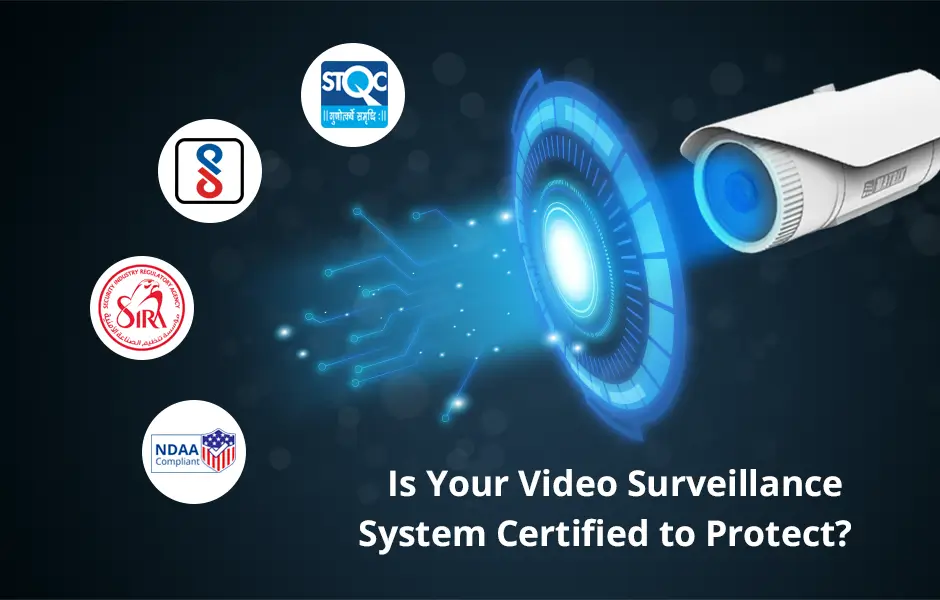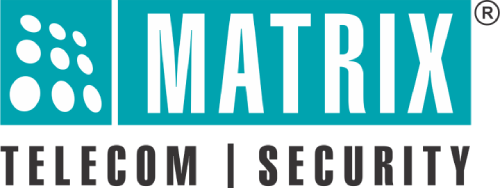
In 2017, 123 police CCTV surveillance cameras in Washington D.C. were hacked and taken offline — right before a high-profile public event. The issue wasn’t the camera. It was a failure of cybersecurity compliance. (Source: BBC)
Imagine a scenario where a major supplier loses a multi-crore government contract in India because their CCTV cameras lacked a mandatory RDSO certification for use on moving coaches.
In both cases, the cameras worked. But they weren’t certified and didn’t comply with the norms.
Certifications aren’t red tape. They prove your surveillance system is safe, secure, and legally fit for deployment — whether in a city, hospital, train, or airport.
In this guide, we explain why certifications are necessary for your video surveillance system and what are the different kinds of certifications you need.
Country-wise Certifications: Ensuring Legal Operation
Every country defines its own rules for what surveillance equipment is allowed. These certifications verify your system isn’t just functional — it’s legally compliant. These certifications protect you from failed tenders, seized shipments, and legal take-downs.
| Region | Certification | What It Enables | Deeper Dive into Importance |
| India | BIS with STQC ER Compliance | Safe installation in government/private projects; cyber-secured cameras. | Ensures cameras meet Indian quality/security standards for safe deployment; adds cybersecurity for surveillance systems. |
| USA | FCC | Prevents interference with vital emergency and aviation services. | Stops surveillance systems from interfering with critical communications (e.g., police, air traffic), vital for public safety. |
| NDAA Sec. 889 | Authorizes use in federal institutions and critical infrastructure. | Crucial for government contracts; addresses national security concerns by restricting specific manufacturers in surveillance supply chains. | |
| UAE | G-Mark | Ensures compliance with GCC safety and power standards. | Grants market access across GCC states; verifies electrical safety and electromagnetic compatibility for surveillance devices. |
| SIRA | Approved for integration into Dubai’s rigorous surveillance ecosystem. | Dubai-specific; validates adherence to stringent local security protocols for both product quality and system integration. | |
| EU | CE | Permits legal sale and installation across EU nations. | Mandatory mark for EU market entry; confirms surveillance products meet essential health, safety, and environmental standards. |
Real risk: Non-compliance can lead to project rejection, product seizure, or forced removal post-installation.
Matrix Network Cameras are ER-compliant, certified by STQC. Check out the official STQC website for confirmation.
Data Privacy: Securing Your Surveillance Footage
Surveillance doesn’t just record spaces — it records people. That’s why laws and certifications are in place to govern how video data is captured, stored, and interpreted, ensuring it’s handled ethically and lawfully.
| Region | Law | What It Enables | Deeper Dive into Importance |
| Europe | GDPR | Mandates transparent recording, secure storage, and lawful retention practices. | Sets global data privacy rules; requires clear recording purpose, secure storage, and controlled access to video data. |
| USA (CA) | CCPA/CPRA | Grants individuals rights over their video data, including deletion and access. | Empowers consumers with control over their visual data captured by surveillance; requires mechanisms for access/deletion requests. |
| India | DPDP | Requires consent-based surveillance aligned with data protection norms. | Emphasizes consent for video data processing; demands clear notification and often explicit consent for surveillance in sensitive areas. |
| Vietnam | PDPD | Ensures lawful handling of personal video data with opt-in consent. | Focuses on legal collection and processing of personal video data, often requiring opt-in consent protocols for surveillance. |
Real risk: Without compliance, footage may be unusable in court — or worse, land you in legal trouble.
Cybersecurity: Protecting Your Surveillance Systems
Cybersecurity standards shield your surveillance system from hacking, tampering, and unauthorized access — ensuring that your footage remains intact, authentic, and out of the wrong hands.
To understand how to protect your system, read this blog on securing video surveillance systems against cyberattacks.
| Standard | Focus | What You Risk Without It | Deeper Dive into Importance |
| ISO/IEC 27402 | Privacy by design in information systems. | Untraceable access, weak accountability, privacy breaches. | Guides building surveillance systems with privacy embedded from the start; prevents unauthorized access and data breaches of video. |
| IEC 62443 | Cybersecurity for Industrial Control Systems (ICS) and Operational Technology (OT). | System-wide vulnerabilities in critical infrastructure networks. | Essential for surveillance in critical infrastructure; prevents cascading cyberattack impacts on operational technology, protecting live feeds. |
| OWASP | Web application security. | Breaches in cyber-security of surveillance platforms like session hijacking, data leaks, etc. | Crucial for web-based platforms; mitigates common vulnerabilities (e.g., SQL injection) that could compromise surveillance video data. |
Real risk: Unprotected systems are open to hacking, live feed tampering, or footage theft.
Engineered with multi-layered security and built to the highest standards, Matrix Network Cameras comply with ISO/IEC 27402, while, Matrix Video Management System is STQC-certified and safeguarded against OWASP Top 10 desktop security risks—ensuring strong cyber defense and uncompromised surveillance data integrity.
To Sum Up
Even the best footage means little without the right certifications. Matrix Video Surveillance Solutions meet country-specific regulations and ensure data security—keeping your surveillance secure, compliant, and reliable.
Connect with us to review your compliance checklist and explore Matrix’s certified video surveillance solutions.

